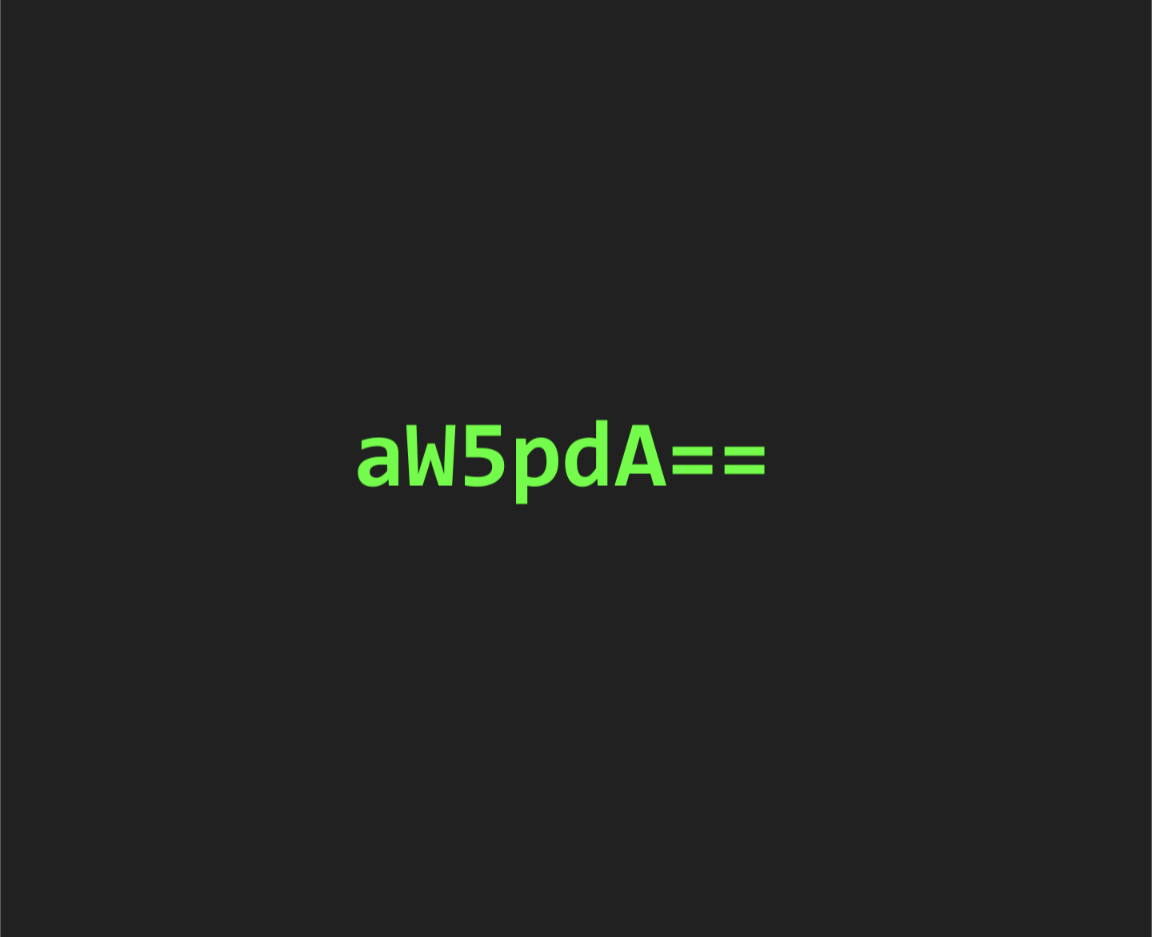I recently switched to Linux (Zorin OS) and I selected “use ZFS and encrypt” during installation. Now before I can log in it asks me “please unlock disk keystore-rpool” and I have to type in the encryption password it before I’m able to get to the login screen.
Is there a way to do this automatically like with Windows or MacOS? Zorin has biometric login which is nice but this defeats the purpose especially because the encryption password is long and tedious to type in.
Also might TPM have anything to do with this?
EDIT: Based on the responses I have to assume some of you guys live in windowless underground bunkers sealed off with concrete because door locks “aren’t secure against battering rams”. Normal people don’t need perfect encryption they just want to add an extra hurdle or two for the crackhead who steals the PC. I assumed Linux had a system similar to what Windows or MacOS has been doing for a decade but I am apparently wrong.

It’s disappointing to see so many commentors arguing against you wanting to do this. Windows has it through bitlocker which is secured via the TPM as you know. Yes it can be bypassed, but it’s all about your threat level and effort into mitigating it.
I am currently using a TPM on my opensuse tumbleweed machine to auto unencrypt my drive during boot. What you want to do is possible, but not widely supported (yet). Unfortunately, the best I can do is point you to the section in the opensuse wiki that worked for me.
https://en.opensuse.org/SDB:Encrypted_root_file_system
If you scroll down on that page you’ll see the section about TPM support. I don’t know how well it will play with your OS. As always, back up all your files before messing with hard drive encryption. Best of luck!

Sums up about every thread asking how to do something on Linux, 30 different responses on how the OP is wrong and shouldn’t do it that way.

Windows is no baseline for security lol
Thanks, Zorin is based on Ubuntu so I have to assume it will be up to date with stuff like TPM which is 15 years old. The data on the page you linked is pretty advanced for me but I’ll give it a shot. Appreciate you addressing my question.

Ubuntu isn’t really on the cutting edge, so I’m not sure how well its going to work. Opensuse tumbleweed is running pretty much the latest everything, so its possible youll need to wait until the next Ubuntu lts

This is also what I would recommend and is most similar to the windows experience

You ended up with full disk encryption. For most people, it’s the simple option, everything is encrypted. That means the OS can’t start without the key, because you’re the only holder of the key. It’s both dead simple, and pretty bulletproof since there’s no way to access the system without the password. But as you said, not everyone wants that.
What you’re asking for is an encrypted home directory. It’s not that Linux can’t do it, it’s just not what you got. Depending on the use case you can either use TPM to unlock the root partition to boot, or not encrypt the system itself. Then when you log in, it decrypts a separate partition (or use ZFS native encryption, or use fscrypt if your filesystem supports it, or use an overlay filesystem like go-cryptfs).
So it’s not that Linux doesn’t support your use case but rather your distro doesn’t offer it as an installation option. From there you either configure it yourself (ArchWiki is great regardless of distro), or seek out a distro that does.
Linux is not an operating system, it’s just the kernel. What makes it an OS is what distros build on top of it. Linux alone is not that useful, hence the basis of the GNU+Linux memes: it’s Linux, plus a lot of GNU tools to make it do useful things, plus a desktop environment and a whole bunch of other libraries and applications, plus the distro’s touch tying it all together in a mostly cohesive experience.

But I’m confused, the decryption of the home directory needs the owners secret to be entered at some point? I don’t see how this solves Op’s problem (which I also don’t understand, you want encryption, you need to decrypt stuff at some point)

Yes, the question is when and how.
You can enter it in the bootloader as a prerequisite to boot anything. You can also enter it at the display manager / login screen, which is a little further down the boot process.
My desktop for example can boot up to the login screen and perform its NAS and routing duties all on its own. But my user and all of my user’s data is still locked at that point: the computer is usable by guests and everything but even if you manage to throw a root exploit at it, my data is completely safe. Only when I log in, either locally or remotely, my password will go through PAM which will run a script that uses my password to unlock my home directory and mount it as I’m logging in.
What changes is what is covered by the encryption, and when the key is required. My root is auto unlocked via TPM, my home is unlocked on demand as I log in to my user account.
OP’s problem is they have full disk encryption so they need the password to boot up Linux at all, but they also get a second password prompt to log in when it reaches the display manager, even if it’s the same password. The solution is either they configure it to auto login since you need a password for the whole OS anyway, or they automate the unlocking of the root partition and use their login password to further decrypt the home directory (or rely entirely on the system being secure that the user isn’t encrypted further and it’s just a password prompt, which is what I think Windows does).

I see, thanks for the explanation. After asking you I kept on reading the comments and understood how tpm helps with the auto decryption.
I still think full disk encryption with auto login is more than enough, at least that’s what I have, and as you can tell anyone can set that up easily.

Afaik you can’t. Disk encryption requires entering the password every time and it asks for it BEFORE the OS is started so you can’t use biometric login either
That’s not technically true as enabling bitlocker on windows and filevault on Mac don’t require two different passwords.

Sorry idk much about Windows and Mac. But what you said sounds like their encryption systems aren’t full disk encryption, they somehow found a way to store the password for login or they just disable the login password completely when the encryption is enabled

They are full disk encryption, and it’s using the hardware TPM.

Oh then I guess idk what TPM actually is

I recently dug into this because I accidentally trashed my wife’s OS which was encrypted with bitlocker. PITA btw and I couldn’t beat the encryption
Bitlocker encryption key hash is stored in 2 possible places. First is an unencrypted segment of the encrypted drive. This is bad because it’s pretty easy to read that hash and then decrypt the drive. The second place is on a Trusted Platform Module (TPM) which is a chip on the motherboard. This is better because it’s much more difficult to hack. It can be done but requires soldering on extra hardware to sniff the hash while the machine boots up. Might even be destructive… I’m not sure.
Either way a motivated attacker can decrypt the drive if they have physical access. For my personal machines, I wouldn’t care about this level of scrutiny at all.
Anyways you can see if any open source solutions support TPM.

I was kinda annoyed at double password login when I setup my system too. So what I did was just enable automatic login for my user since I’m the only one. I just treat my disk password as my login form so I just enter one password. I still have a user password for things like sudo and other permissions handling when I’m logged in but getting into a new session is automatic on startup so it doesn’t annoy me anymore. Would that work for you?

That’s exactly what I do lol.
I think this is what I might have to do as I really don’t want to go back to Windows. I don’t suppose if you know if there is a way to lock the drive upon logging out? Or do I need to do a full shutdown every time.

Move your swap to encrypted part of your drive and suspend to disk. ;)

I’m not sure LUKs can lock a drive that’s booted already since it’s not a RAM session like a live CD is and relies on the decrypted files to operate. This is why the encryption key is prompted from your boot manager prior to actually getting the system running. That said, I lock my computer all the time and just rely on the normal user password to get back in.

I was kinda annoyed at double password login
Same. Not at all interesting.
Boot up password -> ATA DriveLock password -> LUKS FDE password -> Login password, that’s where it’s at.
/jIt’s just funny situation if you forget the DriveLock master password. Yes, it has 2 passwords. The master password is needed to remove the user password which is used for unlocking. If you forget the master password, you can’t ever reset the user password. If you forget both, you upgraded the drive to a paperweight. Additionally, some BIOSes may do hidden key derivation, store the master password in TPM, or do some other crap, so it’s generally not recommended unless you actually need it.
This can also be set inhdparm.
Also, I have no idea what way there is for NVME drives, as this uses ATA commands. It’s also good to note that some drives use this for hardware-based encryption, and some don’t. So it brings varying security.
If you forget both, you upgraded the drive to a paperweight.
That’s why I have a password manager on my phone.

If you want some more convenience but don’t want to give up security, you can use hardware tokens like Nitrokey with GPG.
The process would be generate a random file using
ddand/dev/urandom. Set this as the key for FDE. Encrypt it using your GPG and store it on/boot. Have a helper script to ask you plugin your Nitrokey and (optional) pin to decrypt the keyfile to have root decrypted. I had read this on some blog for dm-crypt so you will need to research and adopt to your setup.
Instead of encrypting the entire drive, encrypt the home folder. That way it’s unlocked when you sign in.

Assuming you want:
- Single password prompt instead of auto-decrypt with tpm
- User’s files to be encrypted
There are several ways to achieve this:
-
autologin (recommended for single user system): / is encrypted using luks or zfs native encryption and user’s home needs to be unencrypted. User’s password may be same as encryption password for convenience, though they still are two passwords used for different purposes.
-
pam mount: / is unencrypted or auto-decrypted and user’s home is encrypted independently from / using zfs,luks,fscrypt,etc. In this case, user’s login password must be same as user’s home encryption password. It’s suitable for multi-user system. NOTE: It cannot be used with autologin since user’s home needs to be decrypted to log in.
WARNING: For tpm usage, using secure boot is highly recommended to prevent unauthorized user from accessing key stored in tpm.
To prevent auto-decrypt with tpm, tpm-pin can be used (with autologin for requirement #1).
-
systemd-cryptenroll with/without tpm: As far as I know it can be only used to unlock disk encrypted with luks2. It can be used without tpm with pkcs11-token (e.g. YubiKey) or fido2-device. It also uses parameter encryption while key is unsealed, so safe from key sniffing via communication bus. This is easy if secure boot is enabled and luks2 is used for encryption.
-
clevis with tpm: It can be used in place of systemd-cryptenroll. May be used with zfs native encryption. Though I’m not sure if it uses parameter encryption (correct me).
-
unencrypted keyfile on usb: Not sure about zfs, but you can use keyfile on a usb drive to decrypt luks containers.
NOTE: I’m not a forensic/security expert. I listed a brief overview of methods I could think of to keep user’s files encrypted while providing single password till login.

systemd-homed can also do it.

oh, I forgot. Thanks for mentioning that :)
Auto decrypt with TPM sounds fine to me but I have no idea what TPM is as this is my first PC with it.
Thanks for the great response though I’ll look into these

I have no idea what TPM is
Read Skull giver’s reply or look it up.
Re-reading your post, I take you want to avoid typing long and tedious password? And that’s why you want to auto-decrypt?
- (Recommended) You could use strong memorable passwords that are not difficult to type and enable autologin. Related xfcd comic:

- systemd-cryptenroll: For TPM usage, I highly recommend using secure boot. Though not sure if you can easily do that. A less secure alternative using systemd-cryptenroll would be use tpm2-pin and bind key to no pcrs (discouraged). But then you’ll have to use luks2 for encryption.
Notice from
man systemd-cryptenrollregarding tpm2-pin:
Note that incorrect PIN entry when unlocking increments the TPM dictionary attack lockout mechanism, and may lock out users for a prolonged time, depending on its configuration. The lockout mechanism is a global property of the TPM, systemd-cryptenroll does not control or configure the lockout mechanism. You may use tpm2-tss tools to inspect or configure the dictionary attack lockout, with tpm2_getcap(1) and tpm2_dictionarylockout(1) commands, respectively Also tpm2-pin is not disk encryption password and short alphanumeric password needed so tpm decrypts the device; so encryption password should be secured in a safe place. Also check if your distro supports systemd-cryptenroll.
-
usb drive: read previous comment
-
clevis: It probably isn’t as simple as systemd-cryptenroll but I guess you can use zfs and combine that with tpm2-pin if not using secure boot (discouraged).
You’ll have to make a compromise somewhere between security and convenience. Even if you use pam mount, you’ll have to enter the password, biometrics won’t do.
Edit: remove unnecessary user tag and add img uri

You dont want to do that.
What’s the point of encrypting something without a good passphrase? It defeats the whole purpose.

If you want to do away with any protection you have with opting in to a security measure, like typing in a password, why don’t you just reinstall and not select the encryption option?
Not requiring a password, or automatically entering a password to decrypt the filesystem, is essentially the same as not having encryption.
Decide which you want: Security or convenience. You cannot have both.

Thats how encryption works. Encryption with TPM protects against removing the drive and reading somewhere else, so I suppose it makes sense for most people.
Linux Distros have this option, Ubuntu has it now I think, but on the others its often manual setup.
Just search for “cryptsetup change to tpm”

https://wiki.archlinux.org/title/Trusted_Platform_Module#Data-at-rest_encryption_with_LUKS
Thats what you want i think

Not sure if this works with drive encryption since it comes before the OS, but could this maybe be done with a YubiKey or something like that?
That way, you can plug it in and not worry about typing the password every time, but then it’s also secure if someone takes your PC? As long as you remove the key when it’s off of course.

I do not know the answer, but this got me thinking: would it be easier to set up a single login for both session and decryption if /home was on a separate partition and only /home was encrypted?

Linux, booting on zfs? Out of the box? What magic is this

I think people are misunderstanding the whole point of drive encryption. It’s so that if the drive is stolen or lost, you don’t have to worry about it as much. I personally don’t see any benefit in doing this if I have to enter a password every time I plug the damn thing in. If you’re concerned about somebody stealing your laptop or desktop, the disk-encryption should be the least of your worries.
To the OC; if you happen to use GNOME, then check out the settings in the DISKS app. It has auto-unlock options in the per-drive settings. I long ago configured it so my USB is auto-unlocked upon being plugged in. Though after several system resets and such whatever I did to do that seems to no longer be visible in the GUI, I know that’s how I set it up in the first place.
To the OC; if you happen to use GNOME, then check out the settings in the DISKS app. It has auto-unlock options in the per-drive settings.
Thanks so much!
EDIT: This didn’t work

Is the setting missing? Or is the setting just not working properly? My laptop has the option greyed out and stuck in the “enabled” setting. I’m not sure how much help I’ll be, but I can try?

